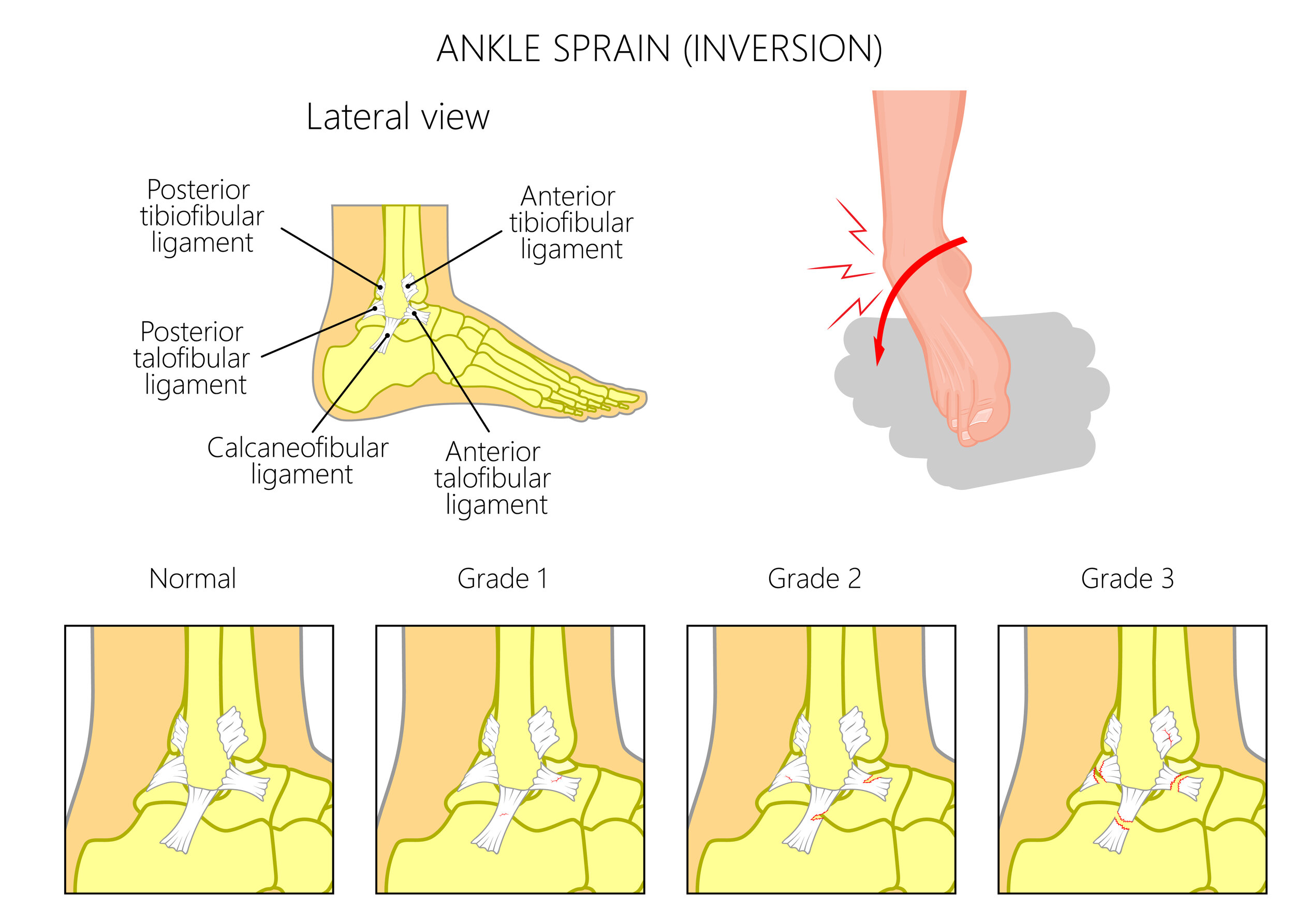Ankle Sprains in Children
Ankle Sprains are an incredibly common injuries in Athletic and sporting children. The most common ankle sprain is a lateral ankle sprain. This is where the ankle rolls to the outside in a rapid inversion movement through the ankle joint. A medial ankle sprain, much less common, is when the ankle rolls rapidly inward. For today’s discussion lets talk Lateral Ankle Sprains…
Lateral Ankle Sprains
When a child does a lateral ankle sprain the movement through the ankle will occur very quickly as they roll to the outside of their foot. This can be very frightening for a child as they experience that first sudden fall to the ground from a lateral sprain. Kids are more prone to ankle sprains because they are yet to develop the strength in muscle memory around the foot and ankle to help aid stability. Hypermobile kids are more specifically at risk whilst playing sports as their ligaments tend to be more stretchy than normal and less strong at supporting joint end range of motion.
Lateral ankle sprains are most common in children that play sports with cross sectional movements required of them such as netball, football, basketball, soccer, dancing and hockey.
Ligaments of the foot and ankle are strong bands of tissue that connect bone to bone. When the ankle moves quickly and excessively outward in a lateral ankle sprain the ligaments can be stretched or even torn in the act of this movement. The most commonly affected ligaments in a lateral ankle sprain are the Anterior Talofibular ligament (ATFL) and the Calcaneofibular ligament (CFL). In Grade 3 injuries the Posterior Tibiotalar ligament (PTFL) and the Posterior Talofibular (PTFL) ligament may be partial torn as well. In some more serious cases fracture can occur in the back of the ankle or the bases of the 5th metatarsal (styloid process)
Grading Lateral Ankle Sprains
GRADE 1 = minor sprain with stretching of ligaments, but no tear.
These are the ankle sprains that are initially perceived quite painful. Often though, there is very little bruising associated with the injury. Your child will be able to weight bear on their foot with minimal pain after a few hours.
The ligaments will heal fully within a 3 week period. Our bodies are amazing aren’t they! The foot and ankle can appear to then be no longer painful within a month. Be aware however that this mild ankle sprain can still de-stabilise the ankle and have long term associate effects in adjacent joints, as well as the overall biomechanics of the foot and ankle as the child matures. This is because even though the ligaments will heal they may be permanently stretched and attenuated leaving the joints unstable. Strengthening exercises for the foot and ankle are encouraged even at this stage. Multiple Grade 1 ankle sprains are a parents giveaway sign that this type of ankle sprain has resulted in more permanent de-stablisation of the ankle joints.
GRADE 2 = moderate sprain, with partial ligament tearing.
This lateral ankle sprain will be quite painful and present with swelling and bruising. Your child will be able to put weight into their foot but it will be very painful for them to do so. They will also feel quite unstable on the foot as they try to walk and load. This one is OUCHY!
It will take between 4-6 weeks to heal from a Grade 2 sprain and should be managed under supervision of your Allied health therapist. A Physiotherapist or Podiatrist are best skilled to manage this rehabilitation.
GRADE 3 = severe sprain with full rupture of ligaments
Oh no! There is no way your child will weight bearing on this type of ankle sprain. There will be severe swelling and pain associated with this injury. Sometimes a Grade 3 injury can also include a fracture to the base of the 5th metatarsal or the back of the talus and will require a period of load management in something called a Cam walker or Moon Boot.
In a very complex Grade 3 sprain the injury can migrate high into the ankle joint and cause damage to the joint between the leg bones and the ankle bones. Its extremely important to get expert professional care if your child has a suspected Grade 3 sprain. Your Podiatrist or Physiotherapist will likely order US & X-ray or when necessary MRI imaging to check the degree of injury and provide an appropriate management plan.
Grade 3 sprains can take between 6-10 weeks to fully heal.
It’s the weekend, you’re at the game and “whip” your child rolls their ankle. Eek…… do this!
Kids should not continue on with the game if they have rolled their ankle. Don’t head up to the strapping tent and get it wrapped tightly to put them back on the field/court. Take them off for the rest of the game.
Get Ice on this as quickly as your can. 20 minute blocks is ideal with a 10 minute rest in between each cycle.
Find a crepe bandage ( most car first aid kits will have this in if first aid is not available on site) and begin to wrap the foot from the toes all the way up to mid leg to provide compression. Not too tight, make sure you can put your finger under the bandage with ease. If you cant fit your finger under the bandage or their toes start heading a shade of purple, you’ve applied a tourniquet not a compression bandage. AH! Unwrap that immediately. Firm and wide, not tight and narrow. See the pic.
For the first 48 hours continue with the compression bandage and ice rotations at 20 minutes intervals for 3 cycles morning/noon/night.
If your child can not weight bear, please don’t make them.
It is recommended that you seek further Medical Attention for your child. A Podiatrist or a Physiotherapist are the best trained practitioners to diagnose the grade and stage of your child’s ankle sprain. Don’t head to emergency and clog up the waiting room. Go straight to the fully trained professionals. No referral needed and the best available care and knowledge to rehabilitate this ankle.
Physiotherapy and Podiatry treatment of Ankle Sprains
By seeking professional management for your child’s ankle sprain you will be reducing the impact of this type of injury on their long term foot and ankle stability. Professionals will rehabilitate the ankle sprain through
Range of Motion
Stretching
Strengthening
Proprioreception
Return to exercise
Over my 19 years of practicing as a Podiatrist I have seen many Adults that have had repetitive lateral ankle sprain trauma as a child that was not managed by a professional. The trauma to the foot and ankle results in long term degeneration of loading joints and weakness of foot function. I highly recommend you seek management for Ankle sprains for your child. As always any questions please just contact me via my contacts page.


